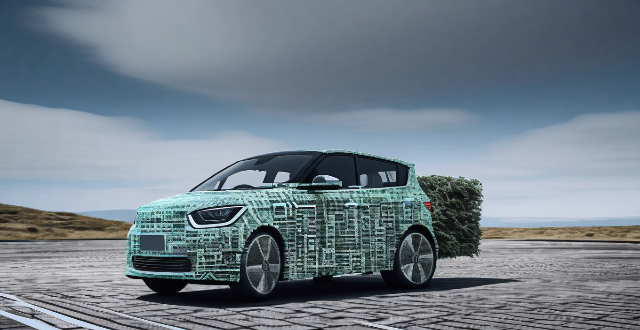Battery technology is a crucial component of electric cars, determining their range, performance, and efficiency. The basic components of a battery pack include the anode, cathode, electrolyte, and separator. During charging, lithium ions move from the cathode to the anode via the electrolyte, while discharging involves the movement of lithium ions in the opposite direction. Key factors affecting battery performance include capacity, energy density, power density, cycle life, and temperature management. By optimizing these aspects, manufacturers aim to improve the overall capabilities of electric vehicles.

Battery Technology in Electric Cars
Electric cars rely on battery technology to store and deliver power to the electric motor. The battery pack is a crucial component of an electric car, as it determines the range, performance, and overall efficiency of the vehicle. In this article, we will explore how battery technology works in electric cars.
1. Basic Components
The basic components of a battery pack in an electric car include:
- Anode: The negative electrode where oxidation occurs. It is typically made of materials like graphite or lithium titanate.
- Cathode: The positive electrode where reduction occurs. It is usually made of materials like lithium cobalt oxide or lithium iron phosphate.
- Electrolyte: A chemical solution that allows ions to move between the anode and cathode during charging and discharging. Common electrolytes include lithium salts dissolved in organic solvents.
- Separator: A porous material that prevents physical contact between the anode and cathode while allowing ions to pass through.
2. Charging Process
When an electric car is plugged into a charger, the following steps occur:
1. Current Flow: Alternating current (AC) from the charger flows through the car's onboard charger, which converts it into direct current (DC).
2. Ion Movement: The DC current travels through the battery pack, causing lithium ions to move from the cathode to the anode via the electrolyte.
3. Chemical Reactions: As lithium ions reach the anode, they undergo reduction reactions, releasing electrons that flow back to the cathode through an external circuit, generating electricity for the car's systems and charging other devices connected to the car.
4. State of Charge: The state of charge (SOC) of the battery increases as more lithium ions are stored in the anode. Once fully charged, the SOC reaches 100%, indicating that the battery has reached its maximum capacity.
3. Discharging Process
When the electric car is driven, the following steps occur:
1. Current Generation: The electric motor draws power from the battery pack, causing electrons to flow from the anode to the cathode through an external circuit.
2. Ion Movement: Lithium ions move from the anode to the cathode through the electrolyte, driven by the potential difference created by the electron flow.
3. Chemical Reactions: As lithium ions reach the cathode, they undergo oxidation reactions, releasing energy in the form of heat and electricity. This energy powers the electric motor, propelling the car forward.
4. State of Charge: The state of charge (SOC) of the battery decreases as more lithium ions are released from the anode. Once depleted, the SOC reaches 0%, indicating that the battery needs recharging.
4. Key Factors Affecting Battery Performance
Several factors affect the performance of a battery pack in an electric car, including:
- Capacity: The amount of energy a battery can store, measured in kilowatt-hours (kWh). A higher capacity means longer range but also increased weight and cost.
- Energy Density: The amount of energy stored per unit volume or weight of the battery pack. Higher energy density allows for smaller, lighter batteries with comparable range.
- Power Density: The rate at which energy can be delivered or absorbed by the battery pack. Higher power density enables faster acceleration and charging times.
- Cycle Life: The number of charge and discharge cycles a battery can withstand before its capacity drops below 80% of its original value. Longer cycle life reduces maintenance costs and extends the battery's usable lifespan.
- Temperature Management: Proper thermal management is crucial for maintaining optimal battery performance and safety. Overheating or overcooling can lead to reduced efficiency and potential damage to the cells.
In conclusion, understanding how battery technology works in electric cars is essential for appreciating their capabilities and limitations. By optimizing various aspects of battery design and management, manufacturers strive to improve range, reduce charging times, and extend the lifespan of electric vehicles.